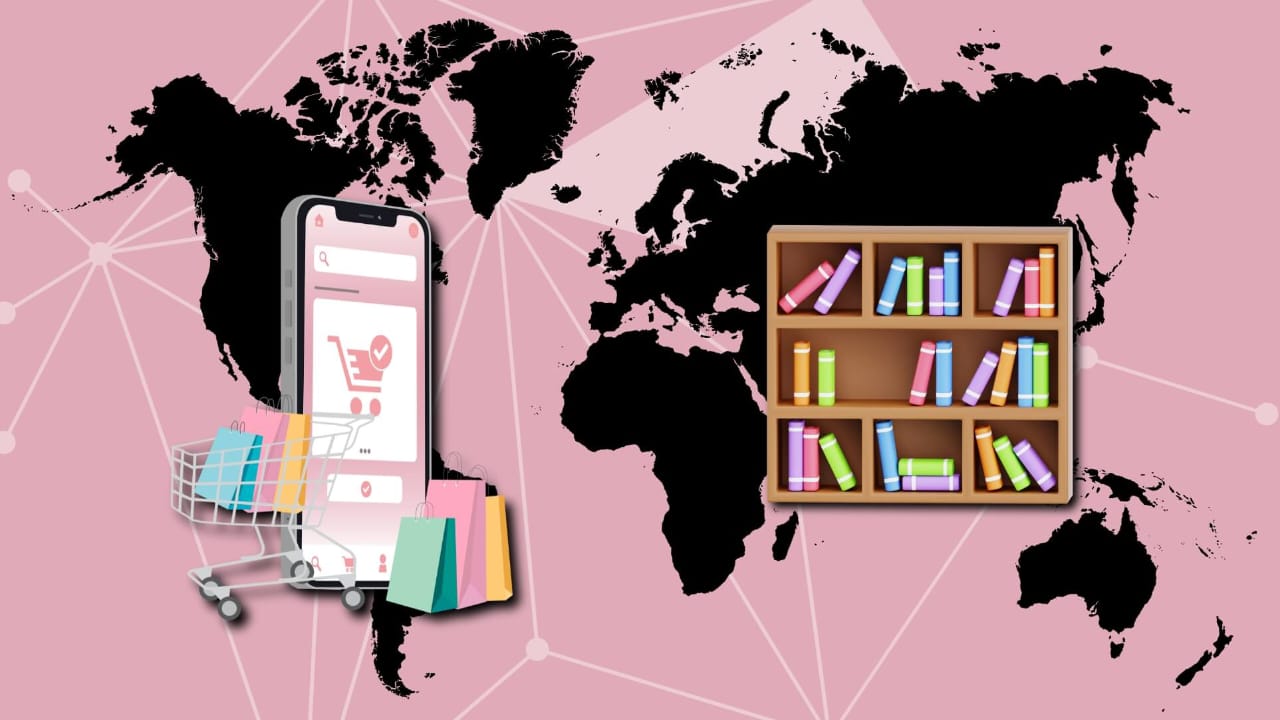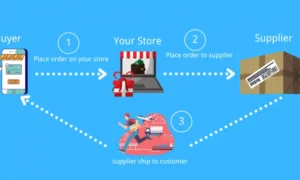Niche markets have always had their charm—those little pockets of passion where communities gather around specific interests, from collectors of vintage typewriters to aficionados of owl-themed jewelry. But let’s face it, charm alone wasn’t cutting it when it came to growth. That is, until technology came swooping in like the hero of a fantasy novel, offering tools and platforms that changed the game forever.
Take bookish retail as a prime example. Once relegated to quaint corner shops or convention stalls, this niche is now thriving globally, thanks to the digital revolution. From e-commerce platforms to data-driven personalization, niche bookstores and related merchandisers are using tech to connect with their audience like never before.
Candlelore.com is a great example of this transformation. Specializing in products that weave together the love of books and storytelling—think candles inspired by fantasy sagas or romances—it bridges tech-driven efficiency with the nostalgia of timeless tales. And, honestly, it’s not just about selling candles. It’s about creating experiences that speak to readers in deeply personal ways.
How Digital Transformation is Redefining Niche Retail
Before the digital boom, niche retailers were pretty much boxed in by geography. Sure, you could be the world’s biggest fan of gothic fairytale decor, but if the nearest store was three cities away, tough luck. Today, digital tools like e-commerce platforms, mobile shopping apps, and even virtual storefronts have obliterated those barriers. Anyone with a smartphone can browse, buy, and receive a package faster than you can say “two-day shipping.”
Take platforms like Shopify and Etsy—they’ve become lifelines for small businesses trying to carve out their own corner of the internet. These tools don’t just level the playing field; they redefine what’s possible. They offer everything from beautifully designed storefronts to analytics that tell you what your customers clicked on more—your whimsical bookmarks or that tote bag adorned with literary quotes.
But the magic goes beyond convenience. Technology has gifted niche retailers the ability to go global and hyper-personalized simultaneously. Personalized recommendations, tailored promotions, and even location-specific content ensure that you’re getting products and messages that feel uniquely “you.”
Just look at how independent niche brands are flipping the traditional retail model. By focusing on online-first strategies, they’re building brands that feel intimate, even across continents. Fanatic about cozy murder-mystery aesthetics? There’s a shop for that. Obsessed with fantasy-inspired home decor? Got you covered. These disruptions are proof that a small idea can catch fire when fueled by the right digital tools.
The Role of Social Media in Revitalizing the Book Industry
If there’s one thing TikTok’s BookTok or Instagram’s Bookstagram have mastered, it’s the art of turning niche communities into cultural movements. Book lovers now have entire platforms dedicated to sharing reviews, fan art, and aesthetically arranged bookshelves—and it’s not just about readers. These platforms are creating massive ripple effects in publishing and beyond.
Fantasy romance, for instance, owes a lot of its current glow-up to BookTok. Remember the buzz around novels like A Court of Thorns and Roses? One viral post, a few dramatic “OMG-this-chapter” reactions, and suddenly these books are not just lining shelves but inspiring accessories, art, and yes, even thematic candles. Enter viral marketing, a phenomenon so powerful that it takes the phrase “word-of-mouth” to a whole new level—more like “word-of-algorithm.” This has literally changed an entire industry as well as the lives and careers of many authors.
For bookish brands, this is a goldmine. By syncing their products with trending hashtags and themes, small businesses can go from obscure to overnight must-haves. Candlelore.com has neatly slotted itself into this trend with their fantasy rich online bookish storefront. Their bookish themed candles—say, one inspired by the Enemies To Lovers trope—feel like they were made for Instagram shots and bookish aesthetic posts. It’s a perfect example of how businesses can tap into the pulse of these platforms without feeling forced, resonating naturally with the very audiences that drive these trends.
From TikTok challenges that catapult forgotten classics into bestsellers to Instagram staples like “shelfies” (bookshelf selfies for the uninitiated), social media has not just revived the book industry—it’s made it cool again. And that’s a headline Candlelore, and brands like it, are happy to be part of.
E-Commerce Platforms as Catalysts for Growth
Gone are the days when launching a boutique store required a rent-heavy brick-and-mortar shop and buckets of capital. Platforms like Shopify,Etsy, Wix, and so many others have flipped the script, making it ridiculously easy for niche retailers to set up shop without needing a dragon’s hoard of resources. With customizable templates, affordable plans, and built-in tools for SEO and marketing, these platforms lower the barrier to entry so small brands can focus on creating great products instead of stressing over coding a website.
Social platforms have even become hubs for shopping with mini-stores accessible directly on the platform. They even have the ability to link to websites and pull product data.
But it’s not just about having a digital storefront—it’s about how seamless it feels when customers use it. Features like one-click checkouts, predictive search (because yes, you should find “dragon bookmarks” after typing “dra”), and mobile-responsive designs make shopping a joy. And that’s critical for niche retailers who aren’t just selling goods—they’re selling an experience.
Thanks to all these technological options, small retailers can not only compete but also thrive, locking down loyal customers who appreciate a touch of personality with their purchases.
Leveraging Data Analytics for Deep Consumer Insights
For niche retailers, analytics unlocks the ability to read their customers’ minds—well, almost. By tracking purchase patterns, browsing behaviors, and even clicks on those cheeky email campaigns, businesses can pinpoint what their audience actually wants. That’s especially important for book-themed retailers, where trends (hello, fantasy romance) can shift quicker than you can say “viral trend.”
Data informs everything from selecting inventory (should we focus on gothic-inspired candles or fantasy scents?) to designing marketing campaigns that hit the mark. Imagine a subscriber getting an email recommending a fantasy bundle right after bingeing BookTok’s latest recommendations—those are the kinds of tailored experiences that lead to sales and customer loyalty.
Small to mid sized brands can use such data-driven personalization to understand readers’ preferences better. By tracking which collections resonate most—whether it’s books, candles, book boxes, or themed merch—they can adjust product lines to cater to their book-obsessed audience. Niche marketers don’t need to guess anymore; analytics gives them a crystal ball to keep their strategies sharp, relevant, and a step ahead of the curve.
How Storytelling and Creativity Flourish Through Technology
At its heart, bookish retail thrives on stories—and there’s no better time to be a storyteller in business than now. Technology has supercharged creativity, offering tools that immerse customers in the world a brand represents. For book-themed businesses, the opportunities are endless because, frankly, readers already want to be part of the story.
Retailers often incorporate storytelling into every purchase. Think themed product launches timed around viral Bookstagram trends or digital scavenger hunts. These aren’t just shopping moments—they’re full-blown experiences that draw fans deeper into the world they love.
Candlelore gets this perfectly. From their evocative candle descriptions to the way the products visually echo the vibes of a beloved book genre, it’s clear they lean into the artistry of storytelling. Imagine being able to light a candle that smells like your favorite literary kingdom while you read—it’s emotional resonance, bottled up and paired with a matchstick.
But that creativity doesn’t happen in isolation. BookTok and Bookstagram are the sparks that ignite these campaigns, giving retailers the feedback and platform they need to innovate. These digital communities push niche sellers to think outside the box, creating everything from fantasy-inspired designs to niche specific lingo and verbiage. It’s proof that technology isn’t just a tool—it’s a canvas for small retailers to paint their vision and bring it to life.
When niche retailers understand the magic of blending creativity with tech, they move beyond selling products to creating connections. And in a world where stories and feelings matter as much as the items themselves, that’s the kind of transformation technology was made for.
Fantasy Romance as a Case Study in Niche Market Evolution
If there’s one genre that has been absolutely basking in the glow of social media hype, it’s fantasy romance. Platforms like Instagram and TikTok have turned this once fairly niche corner of the book world into a powerhouse that fuels everything from bestseller lists to a thriving merchandising ecosystem. Take Sarah J. Maas’s A Court of Thorns and Roses series, for example. It didn’t just sell out shelves—it launched a movement. From fan art flooding your Instagram feed to TikTokers staging reenactments of pivotal scenes, ACOTAR (as the cool kids call it) became more than a book. It became a lifestyle.
Here’s where the brilliance lies for bookish retailers. A genre like fantasy romance doesn’t just inspire reading—it inspires buying. Fans snap up everything from artwork and enamel pins to scented candles themed around the fictional worlds they adore. And when companies introduce candles named after the swoon-worthy characters and landscapes of these novels, it’s not just a product. It’s an invitation to immerse yourself even deeper into the stories that captured your heart.
This crossover between storytelling and tangible goods is the magic formula. Niche retailers don’t just sell products; they cater to fandoms, giving readers a way to celebrate and share their passion. By understanding what these fantasy romance fans crave—romanticized packaging, sensory storytelling, and a tie to their favorite books—businesses can capitalize on a genre that keeps on giving. Celebrities might have their own candles, but the true stars are the book-inspired collections fueled by a vibrant, interactive fan culture.
Conclusion
The evolution of niche markets like book-themed merchandise proves just how profoundly technology has changed the retail landscape. E-commerce platforms have leveled the playing field, social media has given brands a direct connection to audience-driven trends, and data analytics ensures every decision feels informed and customer-focused.
For bookish retailers, the opportunity lies at the intersection of creativity, storytelling, and tech prowess. When a scented candle becomes a portal to your favorite novel or a BookTok trend helps niche fiction surge onto bestseller lists, it’s clear we’re living in an era where even the smallest corners of the market can shine brightly.


































